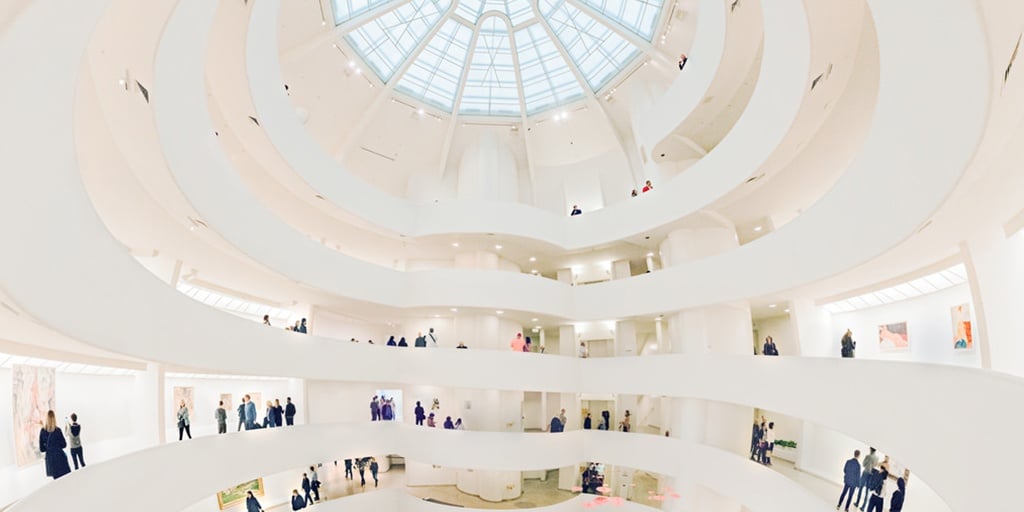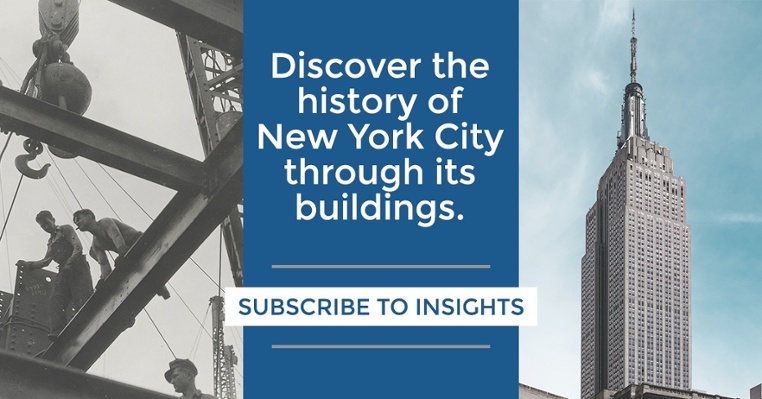Main Photo Credit: Solomon R. Guggenheim Museum by Ken OHYAMA under CC BY-SA 2.0
All great architecture begins with a vision, but for every idea that succeeds and becomes a building, scores of ideas are abandoned, never to reach past the confines of their creator’s desks. Although today’s most luminary buildings can seem as if they were destined to succeed, many of those structures faced uncertainty and potential destruction.
If you’re currently struggling with a design that you worry will never see the light of day, or you fear that your project will run out of time, you’ll probably feel better after you read about what happened with Washington D.C.’s Renwick Gallery and New York City’s Solomon R. Guggenheim Museum.
The Renwick Gallery: Almost Gone Forever
Located at the corner of Pennsylvania Avenue and 17th Street, diagonally across from the White House, this small museum was the first structure specifically designed to be an art museum in America. Considering the building’s history, it’s a minor miracle that it actually is an art museum today.
The idea for an American art museum came to banker and philanthropist William Wilson Corcoran in 1855 as he was purchasing European art. Corcoran realized that if America wanted to be taken seriously as a nation, we needed to establish ourselves as a cultural center with art that could rival that found in Europe.
Corcoran was positive that American art could compete on the world stage. He decided to fund an art museum in Washington, D.C. that was specifically dedicated to American art and that would, as he said, “encourage American genius.”
Prominent architect James Renwick, Jr. was hired to design the new museum and Renwick chose to model the building after French architecture that was popular at the time. This design led to the building’s nickname: “The American Louvre.” The design was approved and construction began in 1859, but just when the project was nearly complete, the unthinkable struck: America was plunged into Civil War.
Corcoran was a Confederate sympathizer and personal friend of Robert E. Lee, so he sidestepped politics by moving to London and Paris for the duration of the war. While Corcoran was in Europe, his properties in Washington, D.C. were seized by the U.S. Army, including the art museum. First used as a warehouse to store records and uniforms, and then converted into the headquarters of the Quartermaster General, it looked as if the building would be lost forever.
When the Civil War finally ended, Corcoran returned to the U.S. and pressed to have his building returned. He received it on May 10, 1869, ten years after he had first broken ground. Damage from the war required extensive, years-long renovations on the building, and by January 19, 1874, the museum opened as the Corcoran Museum of Art.
That should have been the end of the story… but it wasn’t.
Less than a decade after Corcoran’s death, his art collection had exceeded the space in the museum and the pieces were moved farther down 17th Street to a larger building. At that point, the Renwick-designed building became the office of the U.S. Court of Claims, which occupied the building from 1899-1964.
By the 1950s, the U.S. Court of Claims was calling for the building to be razed and for newer, modern offices to be erected in its place. However, in 1962, First Lady Jacqueline Kennedy stepped in to save the building and the neighborhood. Even after President Kennedy’s death in 1963, Jacqueline Kennedy battled to save the building.
Jacqueline Kennedy’s campaign inspired President Lyndon B. Johnson. When Smithsonian director S. Dillion Ripley requested the building from the new President, the former Corcoran Museum of Art became the Smithsonian-owned Renwick Gallery. The Smithsonian opened the Renwick Gallery in 1972 as a craft arts museum, and its restoration was hailed as “a masterpiece” by the American Institute of Architects.
The Guggenheim: Delays and Public Outcry
Though The Guggenheim faced less conflict than the Renwick Gallery, the building’s unique architecture remains controversial today. Plus, considering that the Guggenheim project took 16 years to complete, its success certainly wasn’t a sure thing.
The idea for the Guggenheim Museum began after Solomon R. Guggenheim discovered a new passion: abstract art. Though he discovered the art form later in life, Guggenheim jumped into collecting and soon he decided that he wanted to share his love with the world.
After establishing the Guggenheim Foundation in 1927, he opened the Non-Objective Museum in 1939 in a former New York City auto showroom (he referred to abstract art “non-objective”). The museum was directed by his good friend Hilla Rebay, who had introduced him to abstract art and was known for her discriminating eye. Soon Guggenheim and Rebay determined they needed a larger space, so they went on the lookout for a good architect who could design an art temple.
The idea of an “art temple” may sound strange, but for Guggenheim and Rebay, it was the only way to properly experience art. The Non-Objective Museum had been designed with low-hung paintings placed on pleated-velour-covered walls, in rooms that featured short benches, plushy carpets, soft music, and pervasive incense. All these measures were meant to help visitors evoke a spiritual yet comfortable experience with the art.
Of course, if one wanted a temple-like experience, the best choice for an architect at the time was Frank Lloyd Wright, who saw all his work as “missionary.” Surprisingly, however, instead of a traditional temple, Wright presented Guggenheim with a parking lot structure.
No kidding.
Though he dubbed the Guggenheim an “inverted ziggurat,” the museum’s design has been traced back to an unbuilt, parking-garage structure that Wright had designed for the Gordon Strong Automobile Objective and Planetarium. Other design concepts may have been more traditional though, because Wright apparently created 6-7 comprehensive plans, along with 749 drawings that showcase ideas for the interior and exterior of the museum.
The project was delayed by Wright’s resistance to changing his vision (which usually didn’t comply with local codes and regulations), and was further delayed by post-WWII inflation, which drove up the cost on building materials. Lastly, the project was delayed by Guggenheim’s death in 1949.
Finally, in 1956, 13 years after the project’s start, construction began and continued through a storm of public outcry against the museum’s form. Artists fruitlessly petitioned the Guggenheim to change the building’s structure because it was “not suitable for a symphonic display of painting and sculpture.”
In January of 1959, with the project nearing completion, Wright visited one last time. He died in April of that year, so he was unable to attend the opening a few months later in October. The fact that none of the founders and visionaries in the project were still part of the museum by the time it opened was probably a good thing, considering the critics’ response. The structure was called a giant potty and an amusement park funhouse.
It was also called an achievement.
No matter what you think of the design, the Guggenheim’s one-of-a-kind look has clearly contributed to the museum’s outstanding success. Yes, the building looks different, but it has helped shape the public’s conceptions and expectations of architecture, which is something all designers strive to do.
True Architectural Art Takes Time
If you’re currently dealing with a project that seems to be taking forever, comfort yourself with the idea that this lengthy project may end up being a lasting art piece that betters humanity as a whole and influences the global community for generations. After all, it’s not just art museums that change the world, it’s also houses, commercial buildings, and monuments.
What are you building?
Subscribe to the Milrose blog to get interesting insights and important updates in your inbox.








